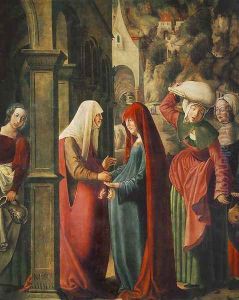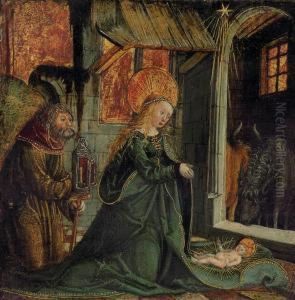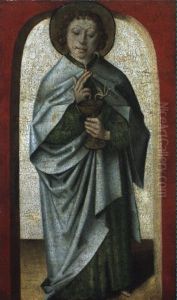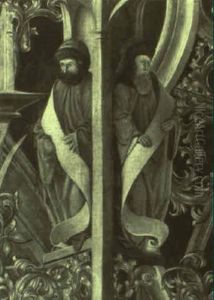Marx Reichlich Paintings
Marx Reichlich was an Austrian painter who was born around 1460 in the Tyrol region, which is present-day Austria. He was one of the notable artists of his time in the late Gothic period. Reichlich is primarily known for his religious compositions and is considered a significant figure within the transition from late Gothic to Renaissance art in the Tyrolean region.
Reichlich's career began in the workshop of Michael Pacher, a prominent painter and sculptor of the time who was known for his fusion of Northern European and Italian styles. This exposure to Pacher's work and the blend of styles is evident in Reichlich's subsequent paintings. Reichlich's works were mainly religious in nature, focusing on scenes from the life of Christ, the Virgin Mary, and the saints. His paintings are characterized by their vivid detail, expressive figures, and a narrative quality that reflects the devotional practices of the period.
Around 1490, Reichlich moved to Brixen (now Bressanone, Italy), where he became a leading artist. He received numerous commissions from churches and monasteries throughout the region. One of his most famous works is the Altarpiece of the Church Fathers, which showcases his ability to create complex compositions with multiple figures and a deep sense of space. The altarpiece demonstrates his skill at blending traditional Gothic elements with the emerging Renaissance perspective and volumetric representation of figures.
While Reichlich's exact date of death is not well documented, it is generally accepted that he died in 1520. His legacy is appreciated in the context of the Northern Renaissance, and his works can be found in various museums and churches, primarily in Austria and Northern Italy. Although not as widely recognized as some of his contemporaries, Reichlich's contribution to the art of his region during a time of stylistic transition remains significant, and his works continue to be studied for their blend of Gothic tradition and Renaissance innovation.



